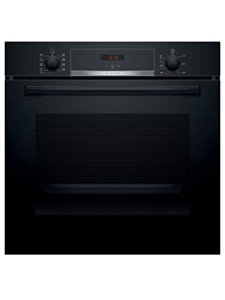Guide To Fitted Ovens And Hobs: The Intermediate Guide In Fitted Ovens…
페이지 정보

Samuel
UX
2025-05-19
본문
Fitted Ovens and Hobs: An In-Depth Guide to Modern Cooking Appliances
Fitted ovens and hobs have actually become a staple in modern-day kitchen areas, integrating functionality, looks, and ingenious technology. These kitchen appliances are created to effortlessly incorporate into kitchen surfaces, providing the culinary lover with the tools required for efficient meal preparation while preserving a sleek and orderly look. In this article, we will check out the different types of fitted ovens and hobs, their benefits, elements to think about when selecting them, and responses to often asked questions.

Comprehending Fitted Ovens and Hobs
Fitted ovens and hobs are appliances specifically designed to be built in ovens into kitchen cabinetry or counter tops for a seamless appearance. They can differ considerably in style, size, performance, and functions, which accommodate diverse cooking requirements and kitchen styles.

Types of Fitted Ovens
- Built-in Ovens: fitted oven These ovens are installed straight into a wall or kitchen unit and come in various setups and sizes.
- Double Ovens: A built in oven-in version that consists of 2 different oven compartments, enabling numerous dishes to be cooked at varying temperatures at the same time.
- Combination Ovens: These flexible appliances integrate conventional baking with microwave innovation.
- Steam Ovens: Ovens that utilize steam for cooking, retaining moisture in food while enhancing flavors and nutrients.
- Single Ovens: A standard oven unit that is the most typical type utilized in homes.
Kinds of Hobs
- Gas Hobs: These use burner for cooking, using immediate heat and accurate temperature control.
- Electric Hobs: Powered by electrical energy, these hobs typically feature smooth surface areas that make them easy to tidy.
- Induction Hobs: Utilizing electro-magnetic energy, induction hobs heat cookware straight instead of the hob surface area, making them energy efficient and a safe choice.
- Mixed Hobs: These offer both gas and intergrated electric oven options, offering flexibility for cooking designs.
Benefits of Fitted Ovens and Hobs
Fitted ovens and hobs offer various benefits that enhance the cooking experience:
- Space Efficiency: Designed to suit kitchen cabinetry, fitted appliances take up less space compared to standalone designs, creating a structured kitchen design.
- Looks: Fitted Oven designs typically create a more cohesive and aesthetically appealing kitchen style.
- Modification: Homeowners can pick from a range of styles, surfaces, and features to match their kitchen design and cooking needs.
- Improved Functionality: Many modern-day fitted ovens and hobs boast advanced technology, such as clever controls, self-cleaning functions, and exact temperature settings, which simplify cooking.
- Security Features: Many hobs, especially induction designs, have security features such as auto shut-off and kid locks, promoting a much safer cooking environment.
Elements to Consider When Choosing Fitted Ovens and Hobs
When picking fitted appliances for a kitchen, numerous factors ought to be considered to make sure the ideal option:
- Cooking Style: Different appliances accommodate different cooking routines. Home cooks should assess their normal meal preparation methods to discover ideal appliances.
- Area and Layout: Measure the available space in the kitchen to make sure that the picked appliances fit neatly without hindering movement.
- Energy Efficiency: Choose appliances with energy-efficient scores to decrease energy costs and ecological impact.
- Technology and Features: Consider the preferred functions, such as wise technology, self-cleaning modes, or particular cooking functions like steam or convection cooking.
- Spending plan: Determine a budget plan before making choices to guarantee that the picked designs line up with monetary preparation.
Table: Comparison of Different Types of Ovens and Hobs
| Device Type | Pros | Cons |
|---|---|---|
| built in electric ovens-in Ovens | Space-saving, customizable style | Setup expense can be high |
| Double Ovens | Prepare multiple dishes at different temperatures | Takes up more space |
| Steam Ovens | Healthy cooking, maintains nutrients | Typically higher expense |
| Gas Hobs | Quick heat control, chosen by chefs | Requires a gas line installation |
| Induction Hobs | Quick cooking, energy-efficient, safe | Requires compatible cookware |
| Electric Hobs | Easy to clean up, stable cooking temperature levels | Heating times can be slower |
Regularly Asked Questions (FAQs)
1. What is the difference in between a built-in oven and a freestanding oven?
A built-in oven is integrated oven and grill into kitchen cabinets for a seamless look, while a freestanding oven stands alone and is typically more visible and accessible.
2. Are induction hobs safe to use?
Yes, induction hobs are thought about safe as they only create heat when suitable pots and pans is put on them, lowering the danger of burns.
3. Can I set up a fitted oven myself?
While some individuals may choose to set up fitted ovens themselves, it is generally advised to hire a professional to guarantee right setup and adherence to security standards.
4. What size of oven is ideal for a small kitchen?
In small cooking areas, think about compact or single built-in ovens that fit within the available area without jeopardizing on cooking functionality.
5. Do fitted ovens and hobs need unique maintenance?
Fitted appliances require standard maintenance, such as cleaning and routine checks. However, specific upkeep tasks depend upon the type of oven or hob.
In conclusion, fitted ovens and hobs represent the embodiment of modern-day kitchen style and performance. By comprehending their types, benefits, and considerations, consumers can make informed options that improve their cooking experiences while fitting perfectly into their home. Whether developing gourmet meals or preparing family suppers, fitted ovens and hobs are valuable tools in any cooking area.


댓글목록
등록된 답변이 없습니다.